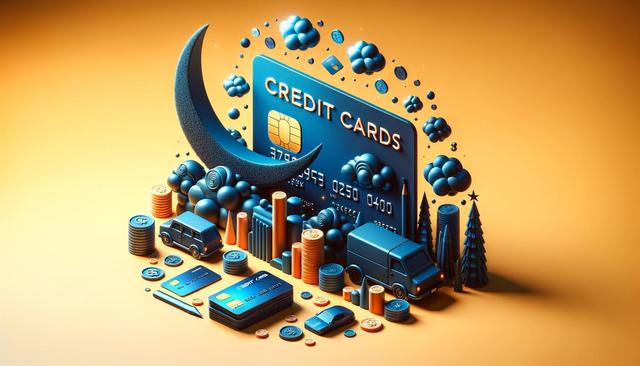Understanding the Role of Credit Cards in Daily Life
Credit cards have become a staple in everyday financial management, offering both convenience and control. They are particularly useful for recurring expenses such as groceries, transportation, and utility bills. With many credit card providers offering detailed monthly statements and digital tracking tools, users can easily monitor their spending habits. This visibility helps households maintain budgets and avoid overspending. Credit cards also serve as short-term financial tools, allowing users to spread out larger purchases over time without immediately impacting cash flow, provided balances are paid in full within the grace period to avoid interest charges.
Using credit cards responsibly can contribute to long-term financial health. When payments are made on time and balances are kept low relative to the credit limit, it positively impacts credit utilization ratios, a key factor in credit scoring models. This is especially beneficial for individuals building or rebuilding their credit history. Additionally, many issuers report payment activity to credit bureaus, making timely payments crucial for improving creditworthiness over time.
Evaluating Everyday Credit Card Options
Choosing a credit card for everyday use involves assessing personal spending habits and financial goals. Some cards are designed for users who prioritize simplicity, offering straightforward terms and minimal fees. Others focus on rewards or cashback programs that incentivize frequent card use. When evaluating everyday credit card options, consider the following:
- Annual fees: Some cards charge a yearly fee that may not be worth it if the card is used infrequently.
- Interest rates: Look for cards with competitive APRs, especially if you plan to carry a balance occasionally.
- Reward structures: Choose cards that align with your spending categories—such as groceries, gas, or dining.
- Introductory offers: Some cards offer promotional terms like 0% APR for an initial period or sign-up bonuses.
It’s also important to look at customer service reviews, mobile app accessibility, and security features when selecting a card. These factors can enhance the overall user experience and provide added peace of mind.
Maximizing Benefits While Minimizing Risks
Credit cards can offer a range of benefits when used wisely. Beyond tracking spending and building credit, many cards come with perks such as purchase protection, extended warranties, and travel insurance. These features can add value, particularly for frequent travelers or those making high-value purchases. To make the most of these benefits, cardholders should be familiar with the specific terms and conditions of their card’s features.
However, credit cards can also lead to debt accumulation if not managed carefully. To minimize risks, it’s advisable to:
- Set up payment reminders or automatic payments to avoid late fees.
- Use budgeting tools to monitor monthly expenses and stay within planned limits.
- Avoid cash advances, which often come with high fees and immediate interest charges.
- Review statements regularly to detect and dispute unauthorized transactions promptly.
By being proactive and disciplined, users can enjoy the advantages of credit cards without falling into common financial pitfalls.
Comparing Secured and Unsecured Credit Cards
For individuals new to credit or those recovering from financial setbacks, deciding between secured and unsecured credit cards is a key consideration. Secured cards require a refundable security deposit, which typically sets the credit limit. These are often accessible to those with limited or poor credit history and serve as a stepping stone to unsecured cards. On the other hand, unsecured cards do not require a deposit and often come with higher credit limits and more benefits but may have stricter approval criteria.
When comparing these options, consider:
- Approval requirements: Secured cards are usually easier to qualify for.
- Credit reporting: Ensure the card reports to all three major credit bureaus to help build credit.
- Upgrade paths: Some secured cards offer the option to transition to unsecured cards with responsible use.
- Fees and interest rates: Evaluate the total cost of holding the card, including deposits and potential charges.
Both types of cards can be useful, depending on where you are in your financial journey. The key is to use them strategically to improve financial standing over time.
Integrating Credit Cards into a Broader Financial Strategy
While credit cards are useful tools, they should be integrated into a broader personal finance strategy. They can complement other financial instruments such as savings accounts, budgets, and investment plans. For instance, using a credit card that offers rewards on recurring expenses allows users to accumulate benefits that can be reinvested or used for future purchases. Additionally, leveraging credit card features like spending alerts and budget categorizations can support overall financial planning efforts.
To effectively include credit cards in your financial toolkit:
- Establish clear financial goals, such as saving for an emergency fund or paying off debt.
- Use credit cards strategically to meet these goals without disrupting cash flow.
- Regularly review and adjust usage based on changes in income, expenses, or financial priorities.
- Stay informed about changes to card terms, fees, and benefits that may affect your strategy.
By viewing credit cards not just as payment methods but as part of a comprehensive financial approach, users can make informed decisions that support their long-term financial well-being.
Conclusion: Making Smart Credit Card Choices
Exploring credit card options for everyday use is about more than just convenience—it’s about making informed choices that align with your financial goals. Whether you’re building credit, managing household expenses, or seeking additional value through rewards, choosing the right card and using it responsibly can provide lasting benefits. By understanding the features of different credit cards, staying within budget, and integrating them into a broader financial plan, users can enjoy both flexibility and control. Responsible credit card use not only supports day-to-day spending but also contributes to long-term financial health and stability.




Leave a Reply